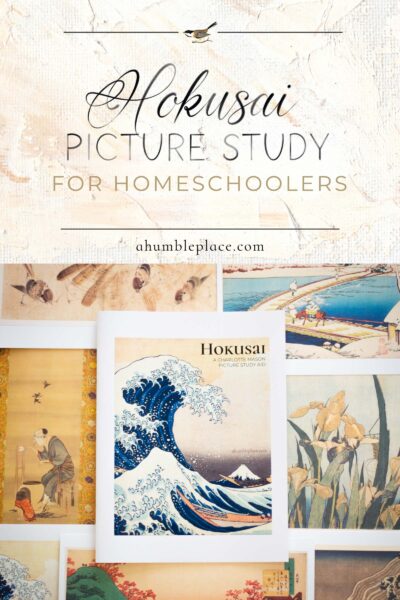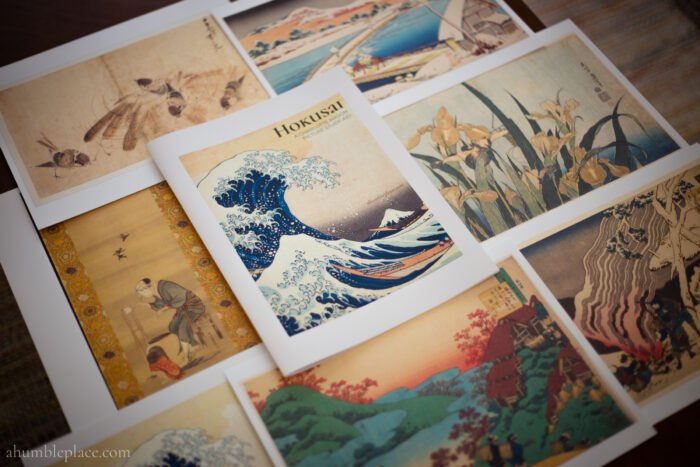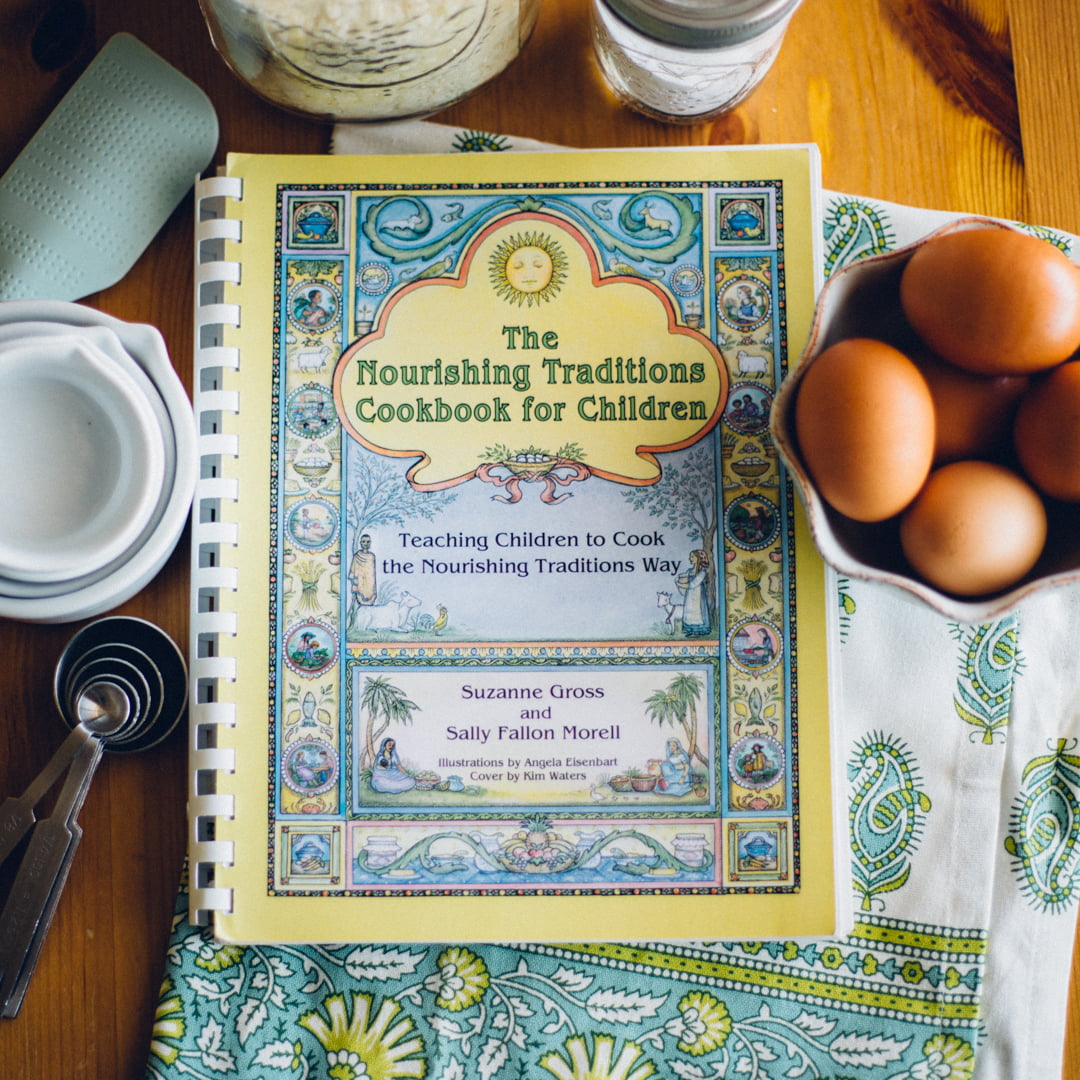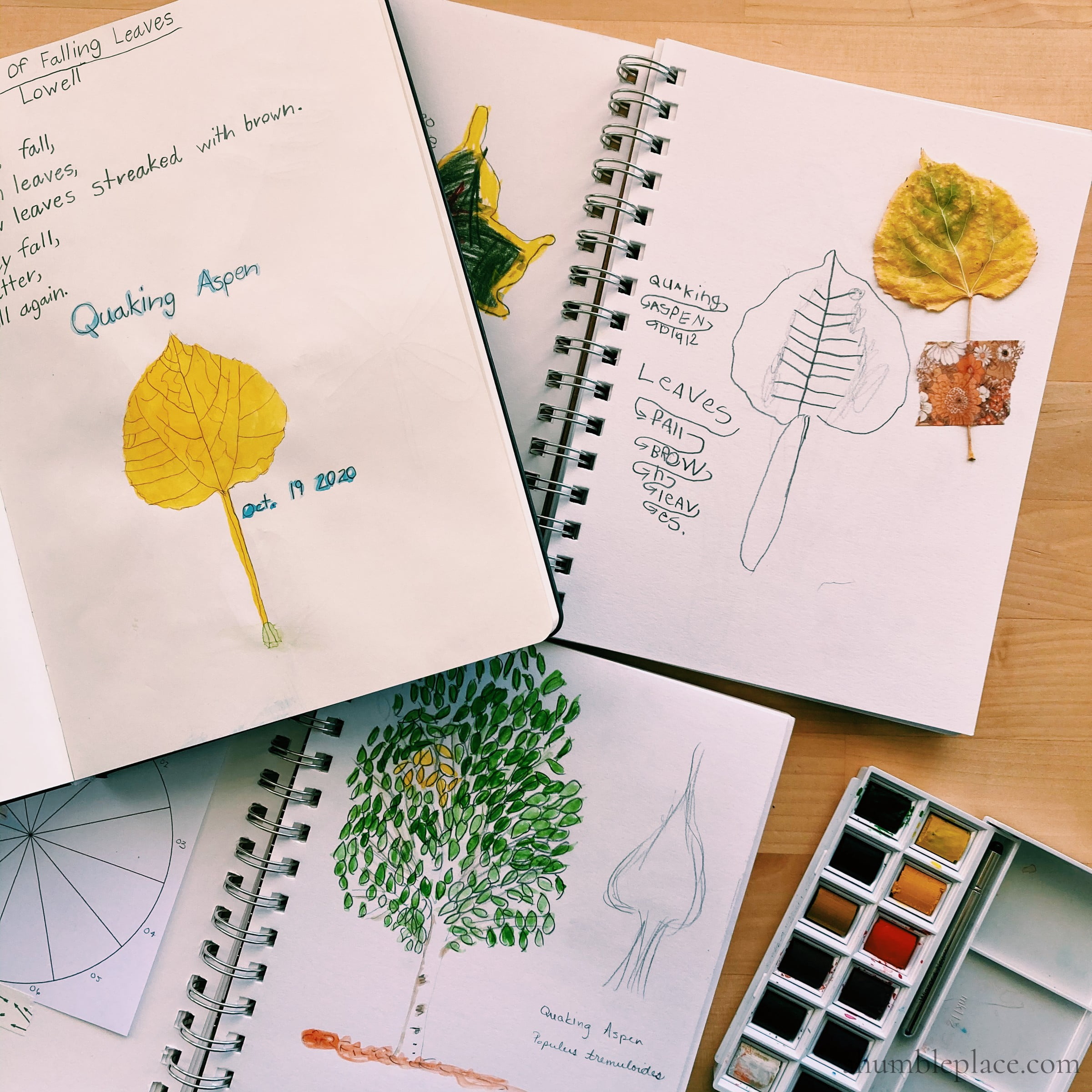Hokusai Picture Study and Art Prints for Homeschoolers

I have drawn things since I was six. All that I made before the age of 65 is not worth counting. At 73 I began to understand the true construction of animals, plants, trees, birds, fishes, and insects. At 90 I will enter into the secret of things. At 110, everything – every dot, every dash – will live. To all of you who are going to live as long as I do, I promise to keep my word. I am writing this in my old age, I used to call myself Hokusai, but today I sign myself ‘The Old Man Mad About Drawing.’
Katsushika Hokusai
Under the Wave off Kanagawa (also known as “The Great Wave”) is probably one of the most iconic images in the world. In a relatively simple design and with just a few colors, Hokusai captured the tumultuous movement of an enormous, larger-than-life (and more prominent than Mount Fuji!) wave reaching out with aquatic claws for two boats that just might be destroyed in the next moment. The men in the boats, bent on continuing their rowing despite the potential doom at their backs, go on with their rhythmic strokes, determined to get across Tokyo bay. Why is this painting so famous, even to the point of having its own emoji ?? This is an excellent question to ask during your picture study time!
As with so many other artists, Katsushika Hokusai (1760-1849) was an interesting character. He wore a few different hats in his early life, both in his manner of earning a living and his identity, even while trying to gain a reputation as an artist. I have read that he was cantankerous, reclusive, and hated cleaning so much that he simply moved when his current house became unbearable rather than cleaning it. He is known for making a painting so large that the entire thing could only be seen from the roof of the palace and an illustration so small that it fit on a grain of rice. While some of the things we think we know about him may be myth and some may be fact, his desire to be known as “The Old Man Mad About Drawing (or Painting in some translations)” is more than fitting for him considering his skill and the sheer multitude of art he put out during his lifetime.
Hokusai offers us a glimpse of everyday life in Japan at a time when it was still closed to the rest of the world (the Kanagawa Treaty was signed just five years after he died). And thanks to the woodblock printing process, during his lifetime, he offered affordable art to the masses. This is also an enormous gift to the modern world, as you can find his prints in nearly every major museum today.
This 26-page Katsushika Hokusai Picture Study Aid includes a summary of Hokusai’s life, key topics about seven of his artworks (see below), resources for further reading (which you can also find on the Living Art Book Archive), seven printable versions of the paintings (without artist names or titles) with the PDF, and a self-portrait of the artist in the printed version of the guide.
The pieces covered include:
Woman Spinning Silk (1790)
Old Hat and Sparrows (ca. 1825)
Grasshopper and Iris (late 1820s)
Under the Wave off Kanagawa (ca. 1830-1832)
Old View of the Boat-bridge at Sano in Kōzuke Province (ca. 1830)
Poem by Minamoto no Muneyuki Ason (ca. 1835)
Poem by Sarumaru Dayū (1839)
I also have high-quality printed versions of the guide itself and professionally printed copies of art available in the shop!

Caveats
This guide is by no means an exhaustive analysis or study of each piece, and that is intentional. I tried to keep it all very simple in the spirit of there being:
…no talk about schools of painting, little about style; consideration of these matters comes in later life, the first and most important thing is to know the pictures themselves. As in a worthy book we leave the author to tell his own tale, so do we trust a picture to tell its tale through the medium the artist gave it. In the region of art as else-where we shut out the middleman.
(vol 6 pg 216)
This Picture Study Aid is meant to offer basic information about the artists as well as ready answers should your student ask about a particular aspect of a piece and the explanation isn’t readily evident. Ms. Mason emphasized not focusing on strict academic discourse when doing picture study, but rather simply exposing students to the art itself:
His education should furnish him with whole galleries of mental pictures, pictures by great artists old and new;––…––in fact, every child should leave school with at least a couple of hundred pictures by great masters hanging permanently in the halls of his imagination, to say nothing of great buildings, sculpture, beauty of form and colour in things he sees. Perhaps we might secure at least a hundred lovely landscapes too,––sunsets, cloudscapes, starlight nights. At any rate he should go forth well furnished because imagination has the property of magical expansion, the more it holds the more it will hold. (vol 6 pg 43)
You can get your copy of the Picture Study Aid or art prints at the link below!







